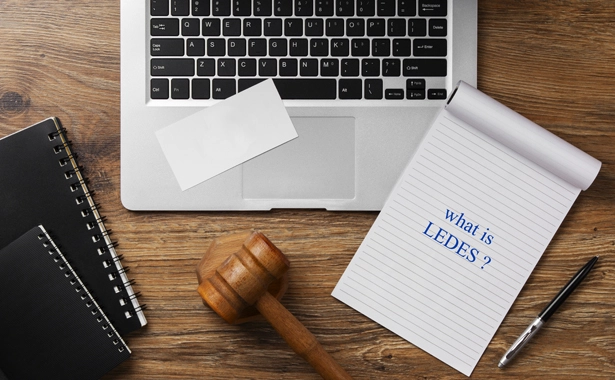Navigating the Characteristics of Standing Quo in Legal Equipments: An All Natural Strategy
In the realm of lawful systems, the idea of status quo holds a significant duty in forming the structure upon which regulations and guidelines are constructed. Comprehending and successfully navigating the characteristics of the condition quo requires a holistic strategy that goes past mere surface-level evaluation. By delving right into the complex interplay of numerous elements affecting the legal standing quo, one can uncover nuanced understandings that pave the means for notified decision-making and strategic planning. As we explore the intricacies surrounding this essential element of legal structures, a deeper understanding of the difficulties and opportunities that include it arises, urging us to reassess conventional approaches and welcome an extra comprehensive viewpoint.
The Importance of Condition Quo Evaluation
In legal procedures, performing a complete status evaluation is paramount to understanding the present state of events and offering a foundation for educated decision-making. This analysis includes a detailed evaluation of existing problems, arrangements, and scenarios that shape the context within which lawsuits are being considered. By assessing the status, attorneys can determine vital stakeholders, legal rights and responsibilities, possible threats, and opportunities for resolution.
In addition, diving right into the status promotes the identification of any kind of voids or disparities that may exist, clarifying locations that call for attention or clarification. This process help in establishing reasonable expectations and creating approaches that line up with the prevailing conditions. Understanding the status quo is vital for establishing a roadmap that guides lawful procedures in the direction of reliable end results while reducing unintended repercussions.
Ultimately, a thorough condition quo evaluation acts as a keystone for sound lawful advice and critical planning. It makes it possible for legal professionals to navigate complexities, anticipate obstacles, and customize their approach to attain beneficial results for their clients.
Factors Influencing Lawful Status
Considering the complex web of legislations, regulations, and societal standards, what are the main elements that form and affect the legal condition quo in contemporary legal systems? A number of essential elements play critical functions in identifying the lawful condition quo within a lawful system. Furthermore, political characteristics and the equilibrium of power within a lawful system can greatly influence the legal condition quo.
Strategies for Condition Quo Monitoring
Reliable administration of the legal status requires a tactical method that recognizes the vibrant nature of legal systems and the varied factors affecting them. One crucial method for condition quo administration is normal surveillance and evaluation of legal developments. This includes staying upgraded on brand-new regulations, regulations, and judicial choices that might influence the existing legal landscape. By proactively keeping track of these changes, attorneys can anticipate possible difficulties and adjust their approaches accordingly.
In addition, effective interaction and collaboration amongst stakeholders are important strategies for handling the standing quo in legal systems. By cultivating open dialogue and collaboration in between policymakers, attorneys, and various other appropriate parties, potential disputes can be resolved proactively, and solutions can be created collaboratively to preserve a stable legal environment.
Challenges in Status Quo Adaptation
Additionally, the absence of clear standards for navigating status quo modifications can produce uncertainty and ambiguity. Lawful professionals frequently discover themselves in undiscovered region when trying to challenge existing standards or integrate new lawful frameworks. This can bring about hesitancy and unwillingness to differ acquainted techniques, better hindering the adaptation procedure.

Applying Holistic Techniques
Including a detailed viewpoint into lawful techniques is vital for dealing with the complex challenges of contemporary lawful systems. Executing all natural approaches involves a change towards viewing lawful concerns as interconnected parts of a larger click to investigate system as opposed to isolated occurrences. This requires an aggressive stance that considers not just the immediate legal weblink ramifications but likewise the more comprehensive societal, financial, and ethical impacts of legal choices.
One trick element of implementing alternative strategies is fostering interdisciplinary partnership within lawful groups. By bringing together professionals with diverse backgrounds such as regulation, psychology, economics, and sociology, a more nuanced understanding of intricate legal concerns can be attained. This joint strategy allows lawful professionals to establish extra efficient approaches that make up a vast array of elements influencing the results of lawful instances.
Furthermore, embracing technology and data-driven insights is essential in executing alternative techniques in lawful systems. Leveraging tools like expert system for legal research, predictive analytics for case outcomes, and information visualization for offering intricate info can improve decision-making processes and improve overall lawful end results. By incorporating these technological developments into lawful technique, an extra effective and all natural method to addressing legal obstacles can be achieved.
Verdict
Finally, navigating the characteristics of status in legal systems calls for a thorough understanding of the importance of status analysis, the different aspects affecting lawful status, efficient methods for status management, and the challenges in status adaptation. Carrying out holistic approaches is vital for successfully adjusting and handling to the status quo in lawful systems. It is essential for lawyers to continuously evaluate and adjust to the transforming dynamics of the status quo to make sure effective and reliable legal outcomes.
Thinking about the intricate web of regulations, policies, and social standards, what are the primary variables that shape and influence the lawful status quo in contemporary lawful systems? Several crucial factors play vital roles in figuring out the lawful status quo within a lawful system. It is the interaction of these elements that collectively form and affect the legal status quo in contemporary lawful systems.
Effective administration of the legal standing quo calls for a strategic method that recognizes the vibrant nature of legal systems and the diverse aspects affecting YOURURL.com them.In conclusion, navigating the dynamics of condition quo in lawful systems calls for a comprehensive understanding of the importance of condition quo analysis, the different variables influencing legal status quo, effective techniques for condition quo administration, and the difficulties in condition quo adjustment.